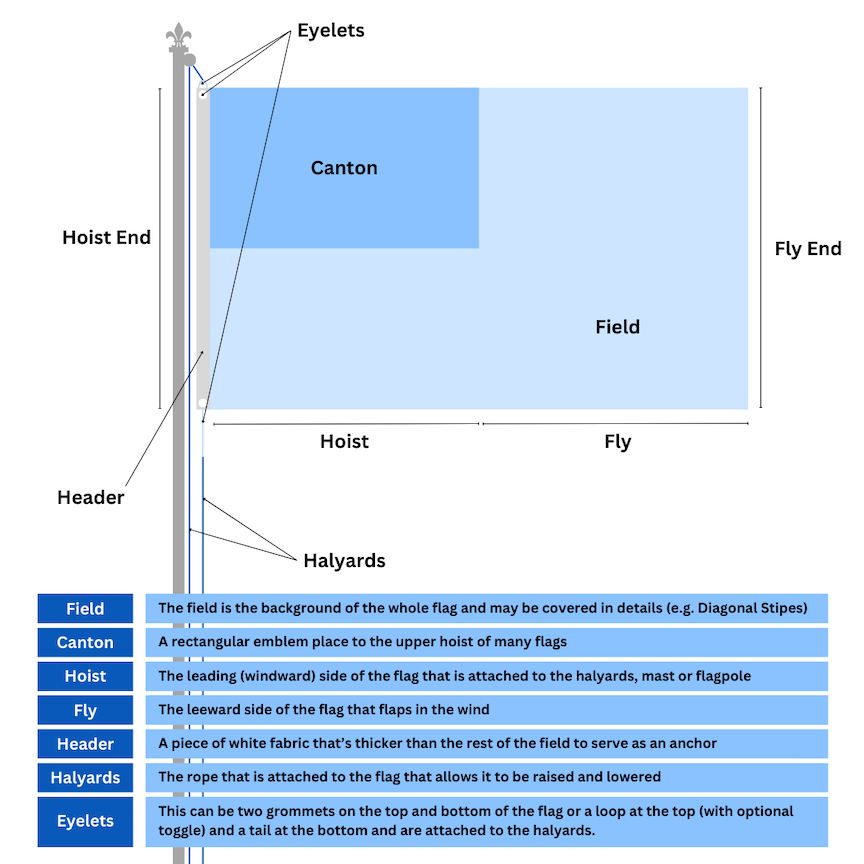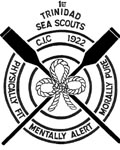Flag Ettiquette and History
The National Flag of Trinidad and Tobago was designed by Carlisle Chang.
Black represents the dedication of the people joined together by one strong bond. It is the colour of strength, of unity of purpose, and of the wealth of the land. Red is the colour most expressive of our country; it represents the vitality of the land and its peoples; it is the warmth and energy of the sun, the courage and friendliness of the people. White is the sea by which these lands are bound; the cradle of our heritage; the purity of our aspirations and the equality of all men under the sun.
Raising and Breaking the Flag
The flag is raised and broken at official ceremonies, as well as at scout meetings and every morning at camp. To raise the flag, it must first be attached to the flagpole halyards using a Clove Hitch at the Toggle and a Sheet Bend at the Eye. Once securely tied, the flag can be raised into positon and tied ready to be broken.
Usually the entire troop is in formation at the time the flag is to be broken. The Troop Leader will give the command for the scout tasked with raising the flag to fall out of formation and march to the flag pole. Once there, the scout will inspect the halyards to ensure that they are clear and report to the Troop Leader: "Halyards all clear!". The Troop Leader will then give the command to salute and to break the flag.
The picture below shows the parts of a flag.

Discussion Questions
Here are some questions that can help you understand this topic better:
- Explain the symbolism of the Flag
- Explain how the flag is raised and broken at a Flag Ceremony
